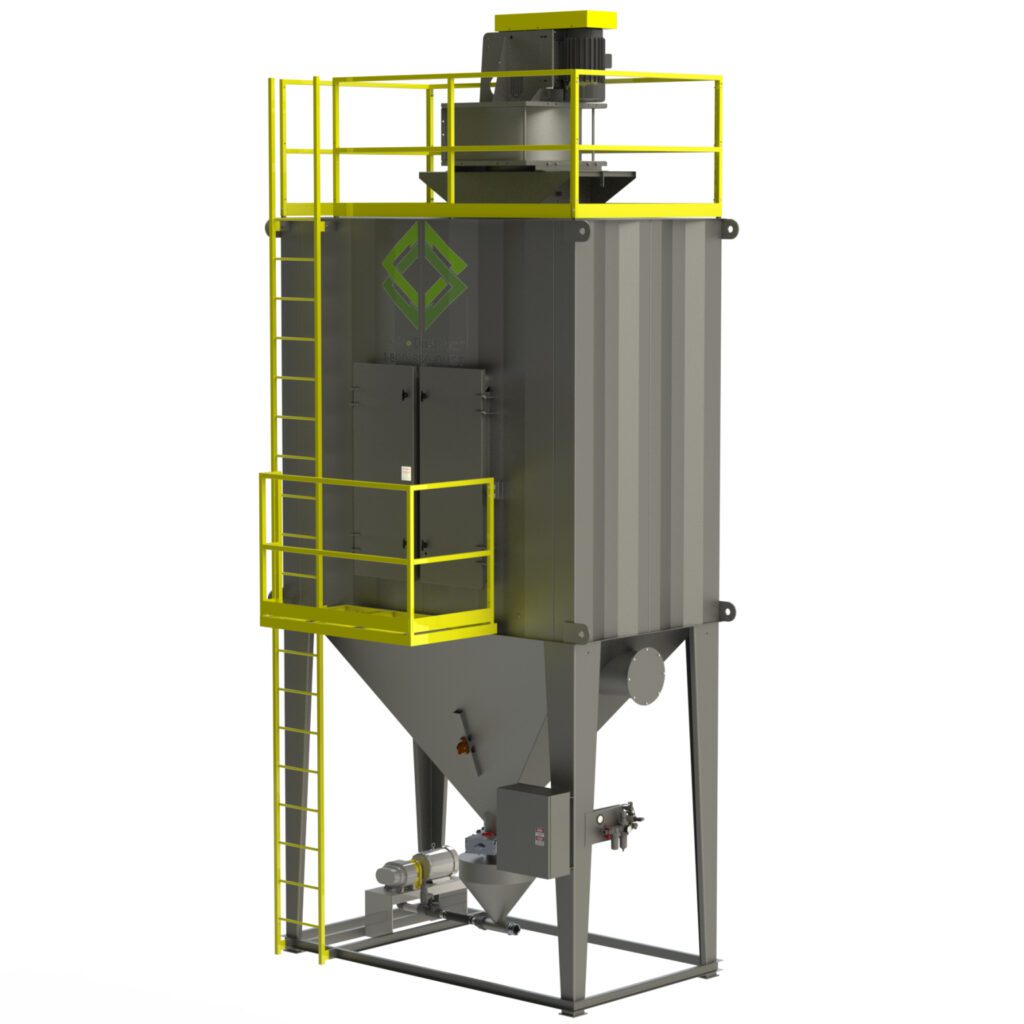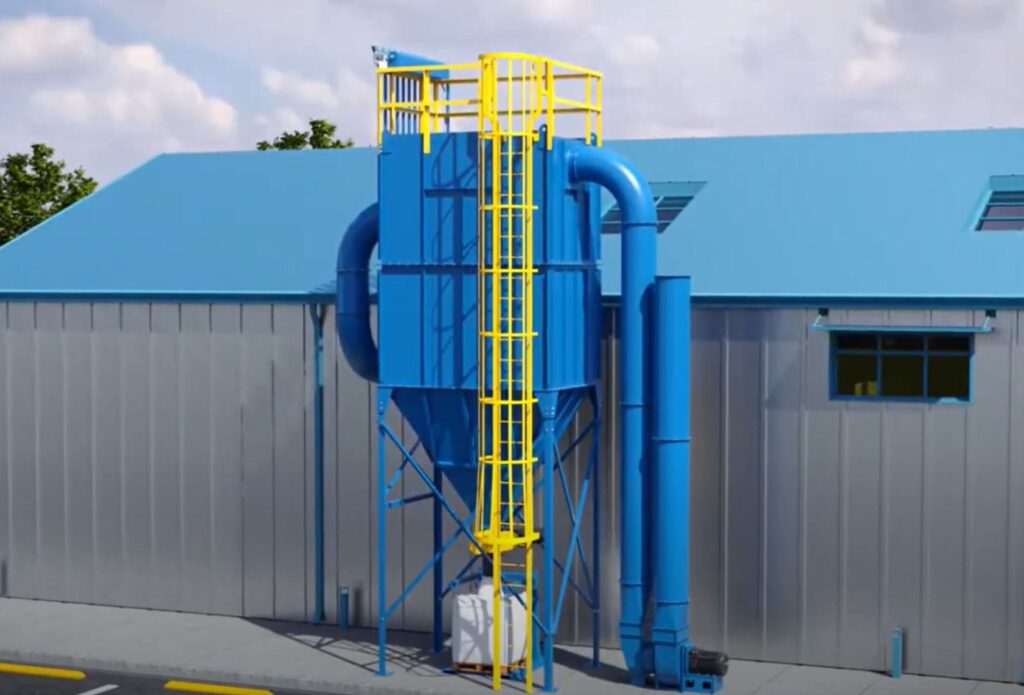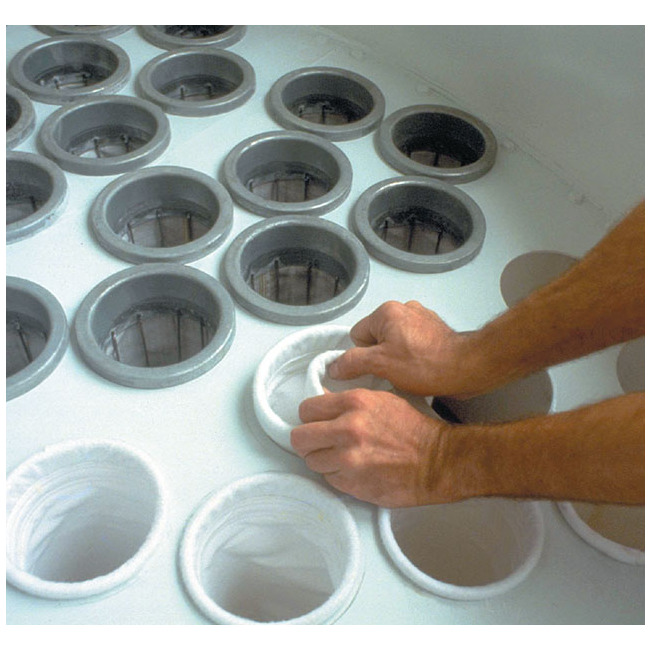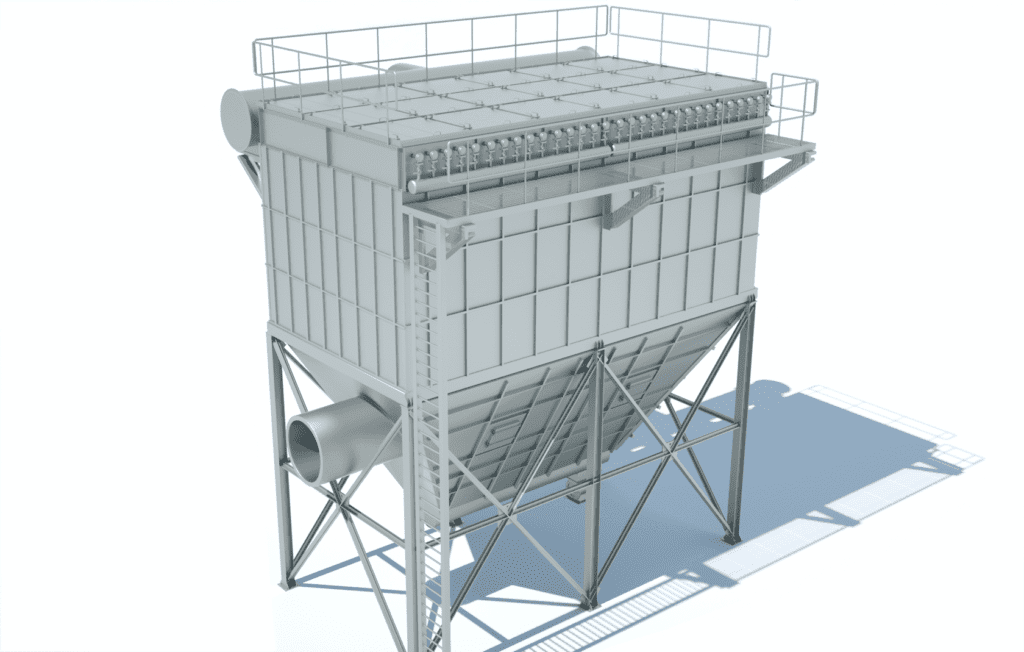A baghouse collector system can be either a top loading or bottom loading. Each type has its own advantages and disadvantages that should be considered when deciding which is best for an industrial application. Today we will be discussing the advantages and disadvantages of both top loading and bottom loading to help you make the best decision for your industrial application.

Advantages of bottom loading baghouse dust collection system
A bottom loading baghouse dust collection system is a type of air pollution control equipment that is used to capture and remove dust and other particulate matter from industrial processes. While there are several disadvantages to using a bottom loading system in a baghouse, there are also some advantages to consider, including:
Improved safety: Bottom loading systems typically use a mechanical arm or other automated loading mechanisms to insert new filter bags into the baghouse, which eliminates the need for workers to manually handle the bags. This can help improve safety by reducing the risk of injury from handling heavy bags. It also reduces the risk of dust inhalation, which can be a serious health hazard.
Increased efficiency: Bottom loading systems are typically faster and more efficient than top loading systems, which can help reduce downtime and increase the overall productivity of the baghouse. This is due to the fact that new dust bags can be easily inserted into the system without having to remove existing bags.
Better seal: Because bottom loading systems insert new filter bags from the bottom of the baghouse, they are able to create a tighter seal around the bag, which can help prevent leaks and ensure that the baghouse is operating at peak efficiency. Without a better seal, dust and other airborne particles can escape the baghouse and be released into the atmosphere.
Reduced maintenance: Bottom loading systems are typically easier to maintain and service than top loading systems, which can help reduce the overall maintenance costs of the baghouse. This Is due to the fact that all of the bags are located in one place and can be easily accessed for maintenance and cleaning.
Improved bag performance: Because bottom loading systems create a tighter seal around the filter bags, they can help improve the overall performance of the bags by reducing air leaks and improving the efficiency of the dust collection process.
Easy to customize: In some cases, bottom loading systems can be customized and adapted to suit the specific needs of the application, which can be useful in situations where the dust collection requirements are constantly changing. These include applications such as those in cement manufacturing plants or other industrial settings where dust collection requirements vary greatly.
Higher safety: Because bottom loading systems typically do not require workers to manually handle the filter bags, they can be a safer option compared to top loading systems. As such, they are often the preferred choice for applications where worker safety is a serious concern.
Disadvantages of bottom loading system in a baghouse

Limited bag sizes: Bottom loading systems are typically designed to use filter bags of a specific size and shape, which can make it difficult to use different bag sizes or configurations. You have to ensure that the size and shape of your bags are compatible with the bottom loading system before you can use them.
Higher operating costs: Because bottom loading systems are often more complex and require more specialized equipment, they can be more expensive to operate than top loading systems.
Increased maintenance: Bottom loading systems typically require more maintenance and servicing than top loading systems, which can increase the overall operating costs of the baghouse.
Higher installation costs: In some cases, bottom loading systems can be more expensive to install than top loading systems, which can increase the upfront costs of the baghouse.
Limited access: Since bottom loading systems insert new filter bags into the baghouse from the bottom, they can be difficult to access and service in some situations, such as when the baghouse is located in a hard-to-reach area.
Reduced flexibility: Bottom loading systems are typically less flexible than top loading systems when it comes to using different filter bag sizes or configurations, which can be a disadvantage in situations where the dust collection requirements are constantly changing.
Higher risk of leaks: Because bottom loading systems create a tighter seal around the filter bags, they can be more susceptible to air leaks if the seal is not properly maintained. You must be sure to thoroughly inspect the seal on a regular basis to ensure that the system is operating at peak efficiency.
Potential for mechanical failure: Because bottom loading systems typically use a mechanical arm or another automated loading mechanism, there is a higher risk of mechanical failure compared to top loading systems.
Reduced safety: In some cases, bottom loading systems can present a higher risk of injury to workers compared to top loading systems, especially if the mechanical arm or loading mechanism fails.
Limited design options: Because bottom loading systems are typically more complex and specialized than top loading systems, they may offer fewer design options and customization possibilities.
Advantages of using a top loading system in a baghouse

A top loading baghouse dust collection system that uses filter bags is a great choice for many applications, including those in manufacturing, woodworking, and other industrial settings. The filter bags are usually installed at the top of the unit, and they are emptied by pushing them down into a hopper. Compared to bottom loading systems, top loading systems offer several advantages:
Easy access: Because top loading systems insert new filter bags into the baghouse from the top, they are typically easier to access and service than bottom loading systems. This can be especially useful in situations where the baghouse is located in a hard-to-reach area such as the ceiling of a manufacturing facility.
Flexible bag sizes: Top loading systems are typically more flexible when it comes to the size and type of filter bags that can be used, which can be useful in situations where the dust collection requirements are constantly changing like in a woodworking shop.
Reduced installation costs: Because top loading systems are generally easier to install than bottom loading systems, they can often be installed at a lower cost. You only need to install the hopper and the filter bags, which reduces the overall installation time.
Improved bag performance: In some cases, top loading systems can help improve the overall performance of the filter bags by providing better support and reducing the amount of air that leaks around the bags.
Reduced maintenance: In some cases, top loading systems can require less maintenance and servicing than bottom loading systems, which can help reduce the overall cost of operating the baghouse.
Easy to customize: Because top loading systems are typically simpler and more flexible than bottom loading systems, they can often be customized and adapted to suit the specific needs of the application.
Reduced downtime: Top loading systems can be faster and more efficient than bottom loading systems, which can help reduce downtime and increase the overall productivity of the baghouse.
Higher safety: Since top loading systems typically do not require workers to manually handle the filter bags, they can be a safer option compared to bottom loading systems.
More design options: Because top loading systems are typically more straightforward and more flexible than bottom loading systems, they often offer a wider range of design options and customization possibilities.
Better support: In some cases, top loading systems can provide better support for the filter bags, which can help improve the overall performance of the baghouse. The support can also help reduce the amount of air that leaks around the bags.
Disadvantages of top loading baghouse dust collection system

While there are many advantages to using a top loading system in a baghouse, there are also some disadvantages to consider, including:
Limited bag sizes: Top loading systems are typically limited to using filter bags of a certain size and shape, which can make it difficult to use different bag sizes or configurations.
Reduced efficiency: In some cases, top loading systems can be less efficient than bottom loading systems, which can result in longer downtime and reduced productivity.
Increased maintenance: Because top loading systems are typically more complex and harder to access than bottom loading systems, they often require more maintenance and servicing, which can increase the overall operating costs of the baghouse.
Higher installation costs: In some cases, top loading systems can be more expensive to install than bottom loading systems, which can increase the upfront costs of the baghouse.
Reduced safety: Because top loading systems often require workers to manually handle the filter bags, they can present a higher risk of injury compared to bottom loading systems. This can be especially problematic in situations where the baghouse is located in a difficult-to-access area.
Conclusion

In conclusion, top loading baghouse dust collection systems can offer many benefits, such as reduced installation costs, improved bag performance, and easier customization. However, there are also some drawbacks to consider, such as limited bag sizes and increased maintenance requirements. Ultimately, the best option for a particular application will depend on the specific needs of the customer. It’s important to weigh all of the pros and cons carefully before making a final decision.
For more information, contact Sofilt, a baghouse dust collection system expert to discuss the best option for your application. With their expertise and knowledge, they can help you select the most appropriate top loading baghouse system for your needs. Contact us today to find out more.
It’s important to choose the right supplier when selecting a top loading baghouse dust collection system. Selecting a supplier with experience designing and installing these systems can help ensure you get the best performance for your money. At Sofilt, we have years of experience helping customers find the right top loading baghouse dust collection system for their needs. Contact us today to learn more. We look forward to assisting you!




